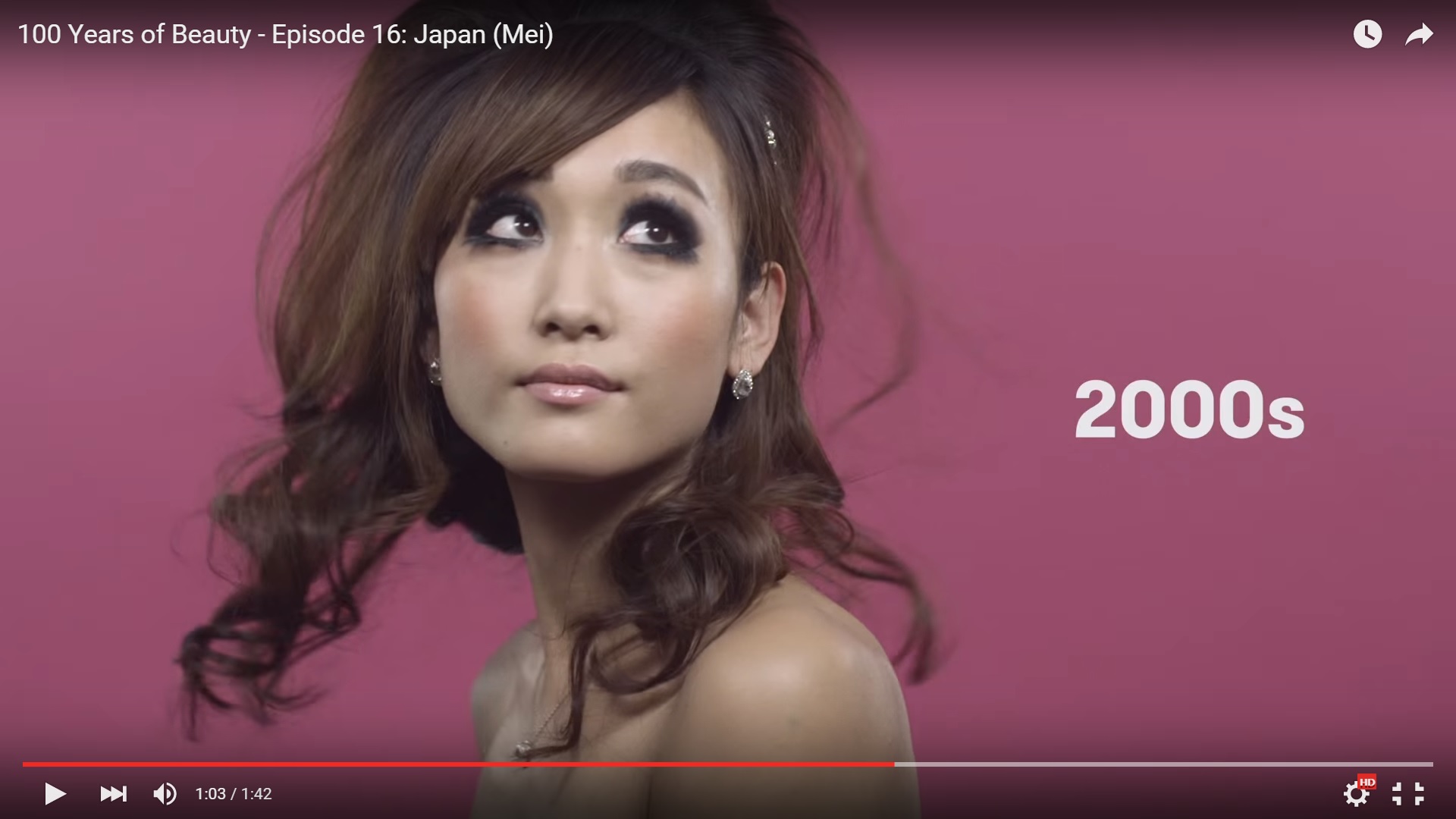Western styles and trends have had a huge influence on Japanese beauty through the times, and the up and coming YouTube series, WatchCut has focused it's latest video highlighting numerous trends from the beauty-centric nation.
Starting with 100 years of "American" beauty, the video on how Black beauty has changed was a hit, and the team even covered the history of male grooming, the company has explored makeup and hair changes across decades in various cultures around the world — from a comparison of North and South Korea to a look at Ethiopia. You've got everything from the geishas of the 1910s to the mod looks of the 1960s, depicting the Western influences coming in, and finally landing on the Harajuku girls of today.
Ready for a peek through time? Let's jump in with 1910, Japan!
In the 1910s, Japan is going through what's called the Meiji Restoration. During this time, the emporer would send Japanese nobles to Europe to study the cultures and society there and bring their findings back to Japan for further implmentation. The resulting "sokuhatsu" hairstyle above is from blend of styles including the "nihongo" hairstyle, which is reminiscient of Europe's Edwardian pompadour.
In the 1920s Japan is the middle of what's called the Taisho democracy. Here we see Japan modernizing and beginning to grow. One magazine in particular is of the first in Japan targeting women, and becomes Japan's preliminary introduction to the perm. Soon after, the perm became a staple in Japanese fashion, bringing us to "mimikakushi" or, "hidden ear" hairstyle.
In the 1930s, globally we see the rise of the modern girl. The woman with the desire to be free of the sexual, social, and political norms... this girl is known as the "moga" (modern girl). The moga were criticized for the foreign influences they absorbed and displayed, and conservatives viewed the moga culture as erotic, grotesque, and nonsense.
The 1940s brought WW2, beginning largely with the attack on Pearl Harbor in 1941. From this moment on, life changes for every woman and man in Japan and self-restraint becomes the motto for women every day. In fact, these virtues were held so strongly that a campaign arises against the perm wave.
WW2 ends in 1945, and the in 1950s we are in the midst of the American occupation in Japan. Audrey Hepburn, a global icon at this time is huge in Japan. The white scarf wrapped around Mei's (the model) head is a nod to the Machiko Maki. Machiko is the name of the heroine in a popular TV show at the time called Kimi No Na Wa.
In the 1960s, historically Japan is experiencing a post-war economic boom and is in what is known as the "golden sixties". Chiyo Okumura was the inspiration for Mai's look during this decade as she was a hit pop singer with an iconic Go-go girl look complete with huge eyes, dramatic eyelashes, and the colorful eyeshadow that English supermodel Twiggy truly put on the map.
In the 1970s Japan's economy is continuing to grow and a new fashion magazine called Anan comes out featuring a model by the name of Sayoko Yamaguchi. Often gracing the pages of Anan, Sayoko is Japan's first internationally recognized supermodel. Her features include blunt, straight bangs, resembling a traditional Japanese doll.
The 1980s are marked with materialism and consumerism, and the most iconic look during this era was Seiko Matsuda. Everyone copied Seiko's look, and she's known for coining the term "burikko", which describes the style and demeanor of one's personal appearance and is identified as a helpless, submissive, cute girl.
In the 90s we see Japan in what's known as the bubble economy and brings the one length style often touted by women frequenting the discotech clubs in Tokyo, while the later half of the 90s brings an emergence of Toyko street fashion. "Ganguro" was also chosen to embody this era, and is a subculture started by rebellious youth to contradict traditional Japanese beauty ideals. It's literal translation breaks into "gan", meaning face, and "guro", meaning black. Not meant to be a racist portrayal of black people, ganguro is about challenging the traditional Japanese norms of beauty.
Following the economic recession, the 2000s brings about an abundance of hope and optimisim as the culture makes it's way into the 21st century. Fashion at the time is about mixing casual and luxury items. Mai's look for this era was based off of a popular model at the time, Yuri Ebihara, and her style "ebi-chan" or "girl next door" is in.
The bonus look for this era is the morigami hair of the Agejo. "Koakuma Ageha" or "little devil butterfly", was a popular magazine for this subculture and showcased models with big, teased hair with lots of volume and height and rode the line between skimpy and classy.
The 2010s sees a rise in girls donning a simpler, softer look and were known for a smiley, motherly, and non-criticizing demeanor.
The alternate look in the 2010s is the decora style. A complete opposite of the motherly girl, this fashion is particularly centered around Harajuku and known for it's toybox style with cheap accessories that can be purchased all over Harajuku.
Typically, Japan has a fairly homogeneous culture and sticking out is not strongly encouraged. A popular saying in Japan goes, "A nail that sticks out gets hammered in". It will be interesting indeed to see where the mainstream beauty looks will continue to go and whether the street fashion counterculture beauty ideals will evolve as well.
Watch the video:
http://www.youtube.com/watch?v=-LobfkvONqs
If you're interested in furthering your historical beauty education, indeed, WatchCut's video on the Koreas is fascinating:
http://www.youtube.com/watch?v=5SWHjWtykns
Source: http://www.refinery29.com/2016/01/101213/japanese-beauty-trends-video
















